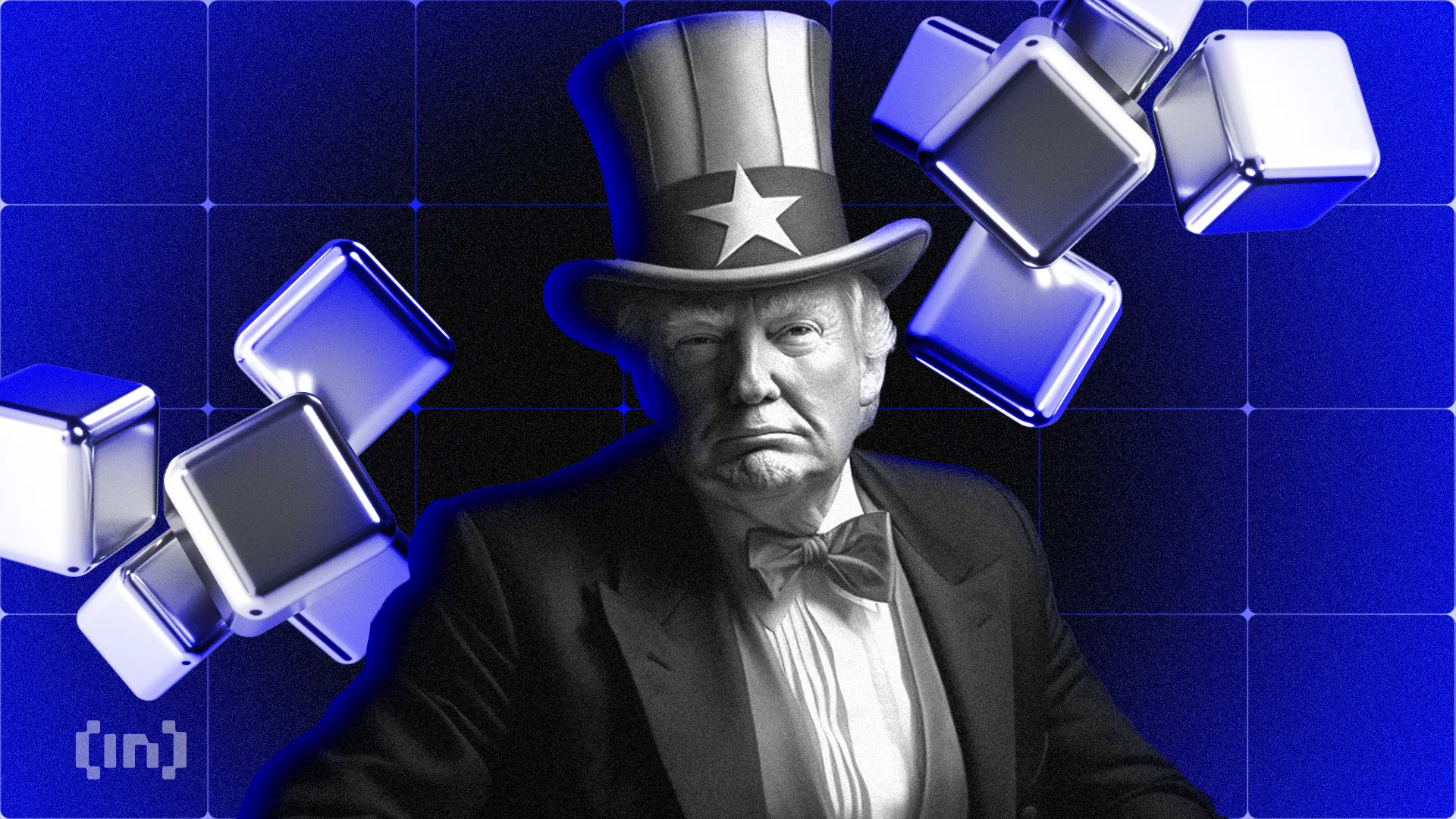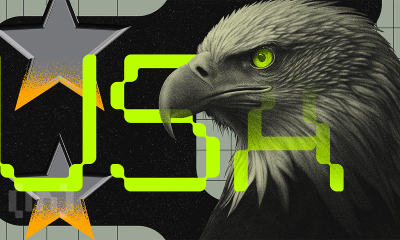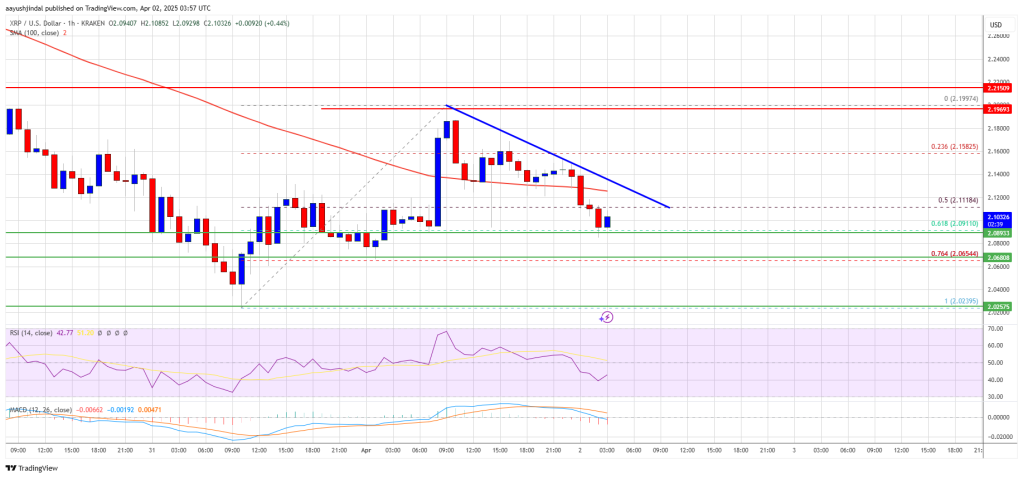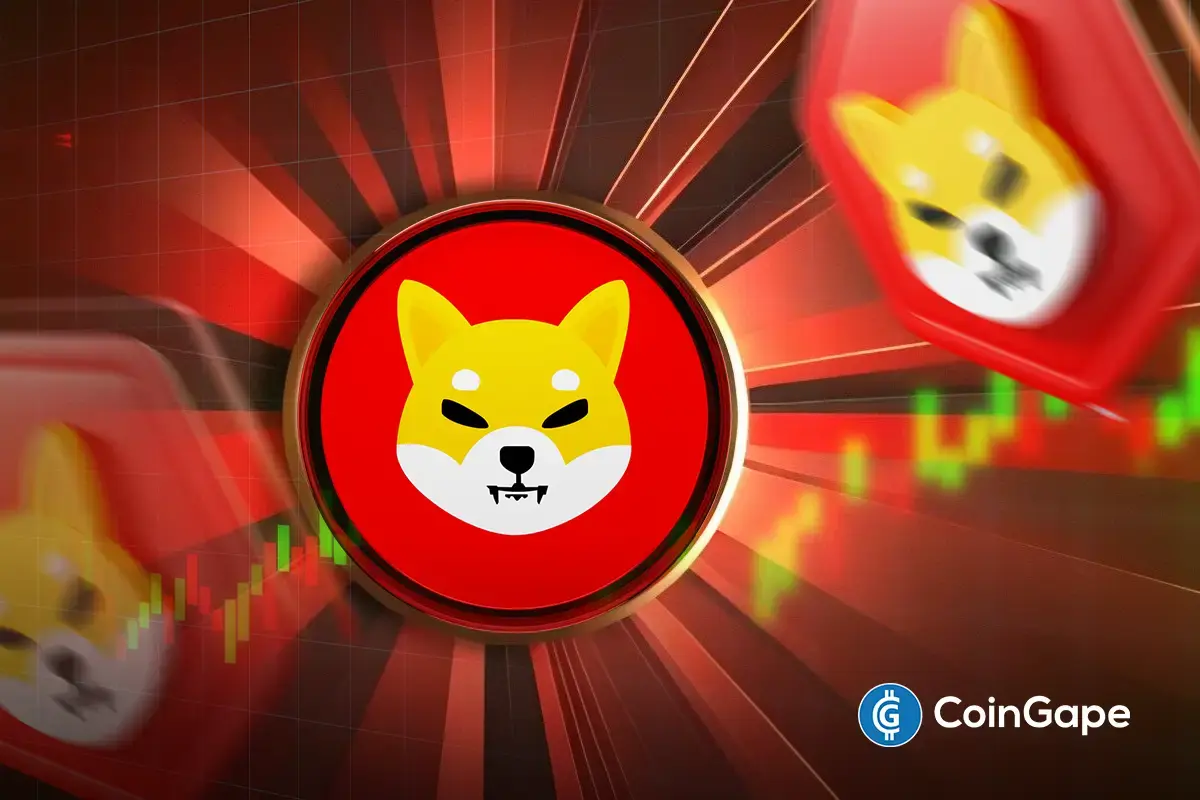Market
Trust Wallet’s Eowyn Chen on Turning DeFi into Everyday Power
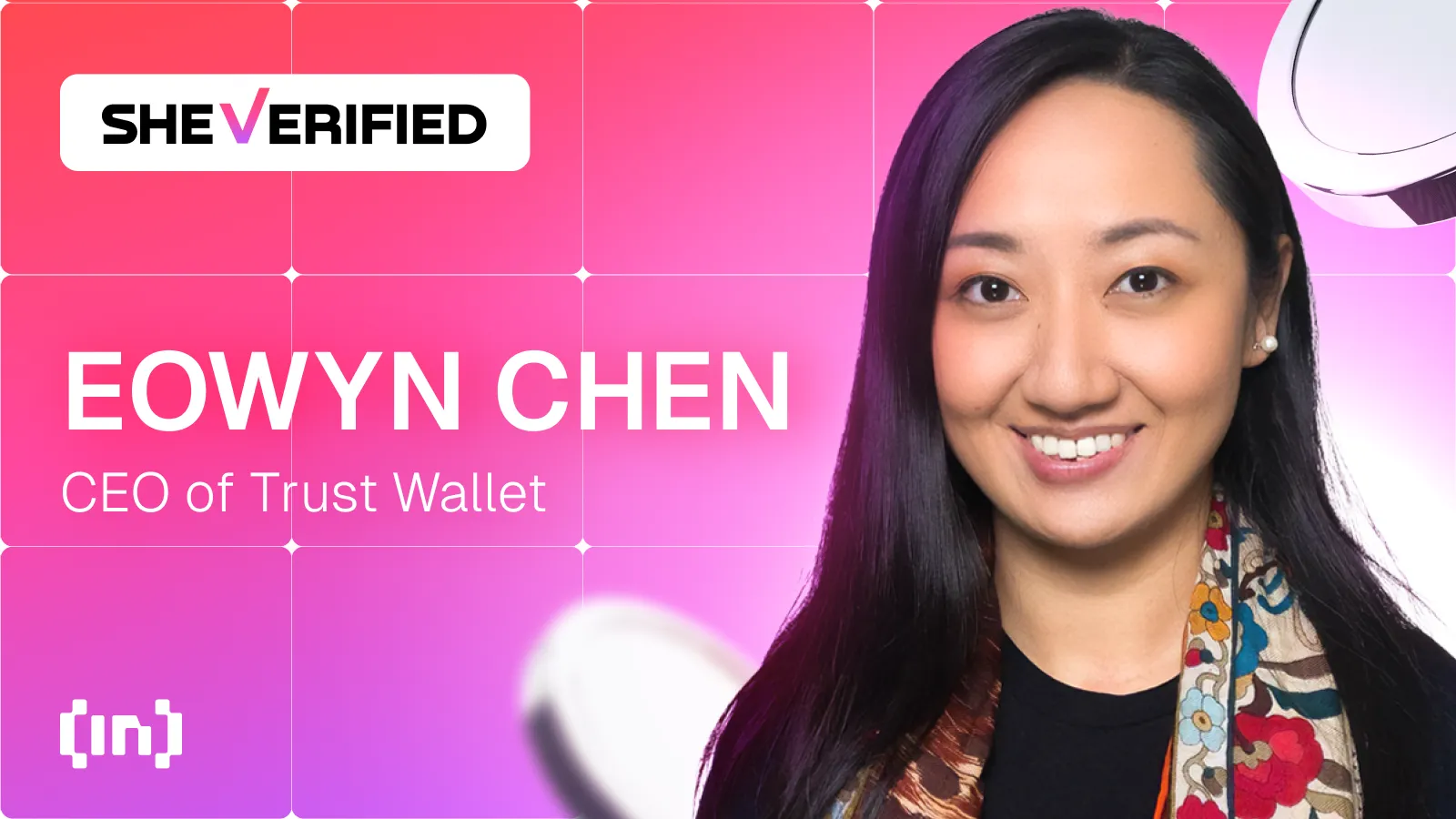
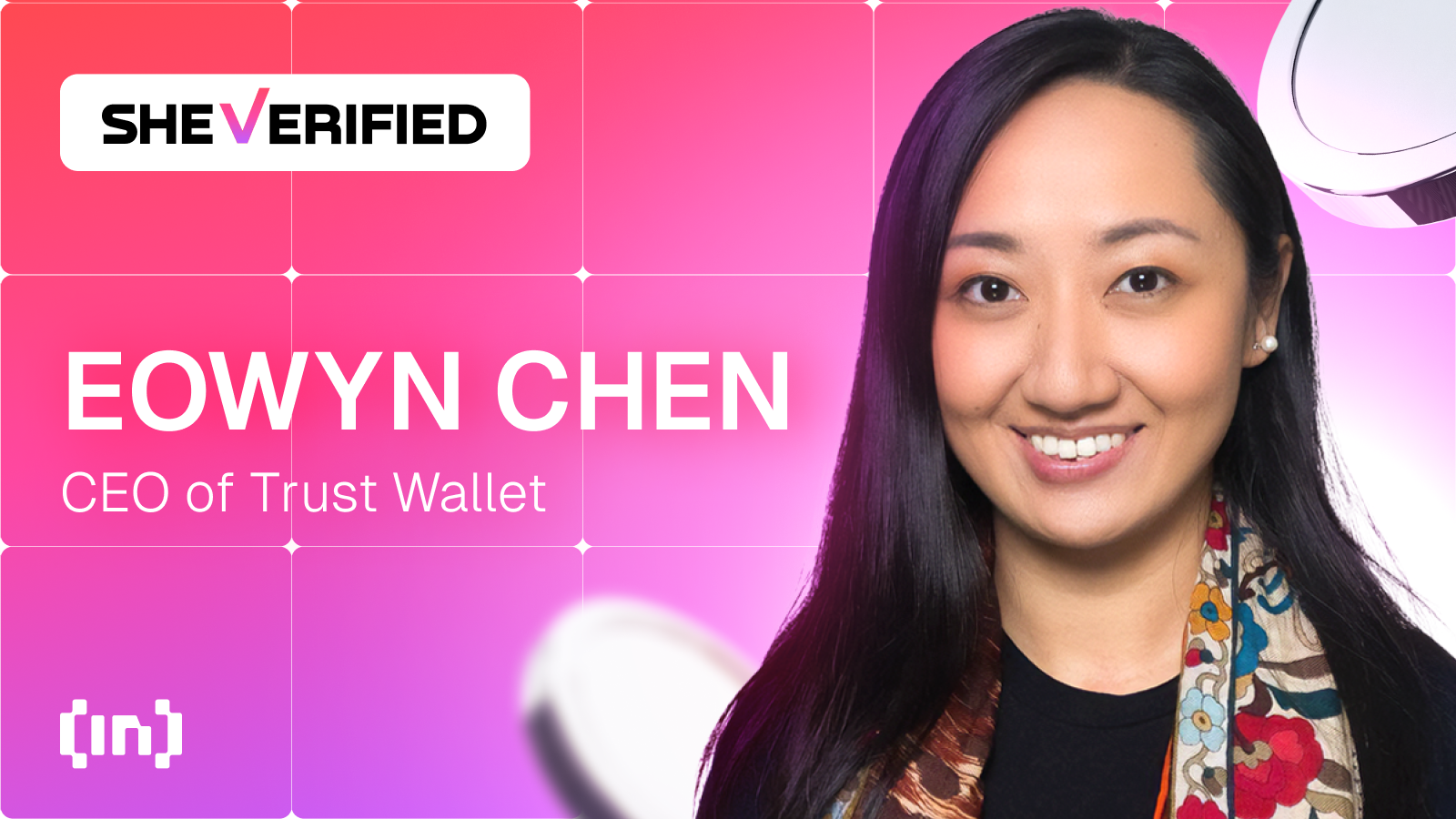
Eowyn Chen’s journey has taken her from a background in finance to her current role as CEO of Trust Wallet, one of the most popular crypto wallets, used by millions around the world. Starting as a consultant with Oliver Wyman, Chen later took on a key role at Binance, where she helped expand the platform’s user base. Her shift into blockchain was driven by a strong desire to empower people to take control of their own data in the digital world.
In this interview, Chen shares how she got started in Web3, the achievements that have established her as a respected leader, and her hopes for building a safer, more open digital economy.
Can you share how you first got started in Web3 and the path that led you to your current role? What key accomplishments have helped establish you as a leading figure in the industry?
My journey into Web3 started with a passion for using technology to create meaningful change, particularly in how to empower people to grow and thrive to be better versions of themselves. I’ve always believed that technology, while it can’t change human nature, has the potential to uplift societies. For me, blockchain and crypto offered a chance to democratize access to financial freedom and data ownership, especially for communities that have been historically underserved.
Between 2017 and 2018, I found myself at the crossroads of AI and blockchain. Back then, San Francisco was buzzing with talk about crypto — it was almost impossible to escape the hype. But it felt chaotic, with many voices and opinions clouded by the market euphoria. Being naturally skeptical of trends, I found myself drawn to the technology even more after the market crash in 2018.
That was the moment when things became clearer. I was fortunate to meet one of Binance’s co-founders, who shared a compelling vision of blockchain as the new infrastructure for value exchange on the internet. It struck a chord with me, and I began to realize how this technology could offer everyday people ownership in a way that technology often reserves for the elite. I began my Web3 career at Binance as an assistant to the co-founder, managing global communities and eventually building the marketing team from the ground up.
At Binance, I focused on scaling the user base, leading the central marketing team to grow it from tens of millions to hundreds of millions. That role was a turning point. It wasn’t just about growth; it was about creating an empowering system that was more inclusive and accessible, with the focus of the users at the center.
What was the moment that shifted your perspective on crypto ownership and self-custody? How it influenced your path from Binance to becoming CEO of Trust Wallet?
In 2018, when Binance acquired Trust Wallet, a casual conversation with Viktor Radchenko, Trust Wallet’s founder, marked a pivotal moment for me. He asked me if I truly owned any crypto, and when I showed him my centralized exchange account, he challenged my perception of ownership.
To prove his point, he sent me 5 BNB (about $25 USD at that time) directly to my Trust Wallet address, no middleman involved. It was such a small gesture, but that experience completely shifted my mindset. I realized the power of self-custody — having full control over my assets without relying on any centralized authority was both empowering and nerve-wracking. It wasn’t just about financial autonomy; it was about responsibility, and that balance between freedom and accountability was what really ignited my passion for decentralization.
But with that control came a new sense of responsibility. I started to wonder how to manage it safely, how to recover it if I lost my private keys, and how different it was from simply using a centralized exchange. It was both empowering and nerve-wracking, and that psychological effect — the balance between empowerment and responsibility—was the magical moment for me. It’s what makes DeFi so powerful, and it’s the foundation of everything else in the decentralized world.
As much as I loved my work at Binance, by 2021, I found myself at a crossroads, eager for a new challenge. It was around that time that Viktor reached out to me for help with Trust Wallet. I’ve always believed that the best products come from genuine need, and Trust Wallet embodied that — an incredible product with strong engineering but lacking any real marketing. I knew I could apply everything I’d learned at Binance to help scale Trust Wallet and bring real decentralization to millions.
When I transitioned to Trust Wallet as CEO, I saw an opportunity to bring this sense of empowerment to millions of others. Today, Trust Wallet serves over 100 million users, giving them true ownership of their assets and control over their financial futures. This journey — scaling platforms that democratize access to blockchain — has been at the heart of my mission and why I’m considered a prominent figure in Web3. I’m passionate about helping more people experience the transformative empowerment of self-custody and growing into financially responsible and aware individuals in today’s world.
How do you approach balancing security and innovation to keep users safe while continuing to advance Trust Wallet’s features?
Trust and security are the foundation for innovation. In the ever-accelerating world of Web3, innovation isn’t just about introducing new features or technologies — it’s about building a future that users can trust. At Trust Wallet, I’ve always believed that security and trust aren’t hurdles to innovation; they are its foundation. Without them, any advancement is on shaky ground.
Balancing innovation with security isn’t a challenging act for us — it’s a seamless integration. Every innovation we pursue is meticulously assessed through the lens of user safety. We don’t push boundaries at the expense of security; we expand them because of it. Our team works tirelessly to enhance the user experience while embedding top-tier security features that often operate behind the scenes but make a world of difference.
Our commitment to security is both relentless and proactive. Between 2023 and 2024, we conducted 86 internal and 12 external security audits. These aren’t just numbers; they’re reflections of our dedication to staying ahead of potential threats. Earning the ISO/IEC 27001:2022 and ISO/IEC 27701:2019 certifications wasn’t just an achievement—it was a promise to our users that we’re meeting global standards for security and privacy.
But certifications and audits are just part of the story. We’ve taken tangible actions to protect our community: blocking over $439 million from potential scammers, preventing more than 1.4 million malicious dApp connections, recovering close to $1 million stolen funds, and shutting down hundreds of phishing sites and impersonator accounts. Each of these actions represents our commitment to safeguarding our users’ assets and trust.
The core philosophy of Web3 is decentralization, and self-custody is the foundation for decentralization – empowering individuals with full control over their digital assets. This shift is transformative, but it also comes with significant responsibility. It’s not enough to hand over the keys; we must also ensure that users have the knowledge and tools to protect what’s theirs. That’s why education and robust security measures are integral to everything we do.
For me, the essence of balancing innovation with security is rooted in purpose and transparency. Every advancement must serve our users meaningfully and reinforce the trust they’ve placed in us. We believe that transparency builds trust, and trust is the currency of the digital age.
As we navigate the uncharted territories of Web3, our mission remains clear: to empower users to explore this new frontier with confidence and peace of mind. By making security the cornerstone of our innovation, we’re not just keeping pace with the industry’s evolution—we’re helping to define it. Together with our community, we’re building a safer, more transparent, and truly innovative digital world.
What do you see as the biggest challenges preventing women from entering the blockchain space, and how can the industry address these issues?
Blockchain is one of the most meritocratic industries out there. It’s still young, quickly changing, and driven purely by results. In this space, what matters isn’t who you are but the value you bring. That said, I understand why many women feel uncertain about stepping into it. The industry’s technical and financial focus can seem intimidating, making it feel like unfamiliar ground. But that’s precisely why we should dive in, not step back.
One of the systemic issues we face is the lingering perception that blockchain, like many tech sectors, is male-dominated. This perception discourages women from joining and keeps the field feeling exclusive. Many women think they need a technical background to succeed here, but the reality is that blockchain thrives on diverse skills and perspectives. Whether in tech, strategy, or leadership, women have the potential to lead in every aspect of this space. Feeling like a minority at times is natural, but it shouldn’t be a reason to hold back. We can’t let fear or unfamiliarity define us.
I’ve personally seen women thrive at every level of blockchain. In fact, there’s a growing trend where male founders turn to female CEOs to help scale their companies. Bitget, WalletConnect, and Trust Wallet are just a few examples that come to mind. Personally, I’ve always felt supported by my team and never felt inadequate because of my gender. But more than that, I believe women need to see themselves not just participating in this space, but leading. Whether it’s as developers, product managers, or CEOs, we need to make our presence known and take ownership of the opportunities before us.
Creating a supportive environment is key. We need accessible education, strong mentorship, and communities that uplift and empower women. Blockchain is fundamentally about decentralization and empowerment, and that mission must include women. I’ve been fortunate to have people around me who trusted me, but I also recognized the need to build my own confidence. And when women step up and fully engage in this industry, we’re not just changing tech — we’re redefining the future of finance, leadership, and innovation itself.
So to all the incredible female talent out there: don’t get caught up in the numbers or feel discouraged by how many women are in the room. Focus on delivering value. When you do, you’ll earn respect, and with that respect comes the power to help shape this industry’s future. We belong here, and it’s time to take our place.
What is your long-term vision for the role of women and diverse voices in the blockchain industry?
From its inception, the blockchain industry has been global, decentralized, and deeply connected in the core. It operates without the traditional boundaries that often limit other sectors — offering the freedom to work remotely, collaborate virtually, and participate in a truly borderless economy. These values have laid the foundation for one of the most globally diverse industries, not just in terms of geography, but in mindset and vision.
Diversity is about far more than identity labels. True diversity emerges when different voices, perspectives, and experiences come together, engaging in meaningful, civil dialogue while being united by a shared belief in the transformative power of blockchain. I see the future of blockchain as one that is inclusive and representative of all voices. The technology has the power to democratize access to opportunities, but we need to ensure that diverse perspectives are shaping its development.
I was recently discussing this with a fellow female OG VC. We both agreed: the female perspective, as well as the inclusion of diverse voices, will be pivotal in taking this industry to the next level. There’s an innate strength in the power of women and diverse leaders to empathize, collaborate, and solve problems in ways that are inclusive and forward-thinking. As the blockchain space grows, embracing this diversity will not only help the industry mature but also ensure it serves the needs of a truly global user base.
For women, this means more than just entering the space — it means leading and innovating within it. I envision more women not just participating but founding projects, building technologies, and influencing policy. To get there, we need to continue making the space accessible, fostering mentorship programs, and creating platforms for diverse leaders to thrive. My hope is that in the next decade, diversity in blockchain will no longer be an issue because it will be the standard.
Disclaimer
Following the Trust Project guidelines, this feature article presents opinions and perspectives from industry experts or individuals. BeInCrypto is dedicated to transparent reporting, but the views expressed in this article do not necessarily reflect those of BeInCrypto or its staff. Readers should verify information independently and consult with a professional before making decisions based on this content. Please note that our Terms and Conditions, Privacy Policy, and Disclaimers have been updated.
Market
BNB Price Faces More Downside—Can Bulls Step In?
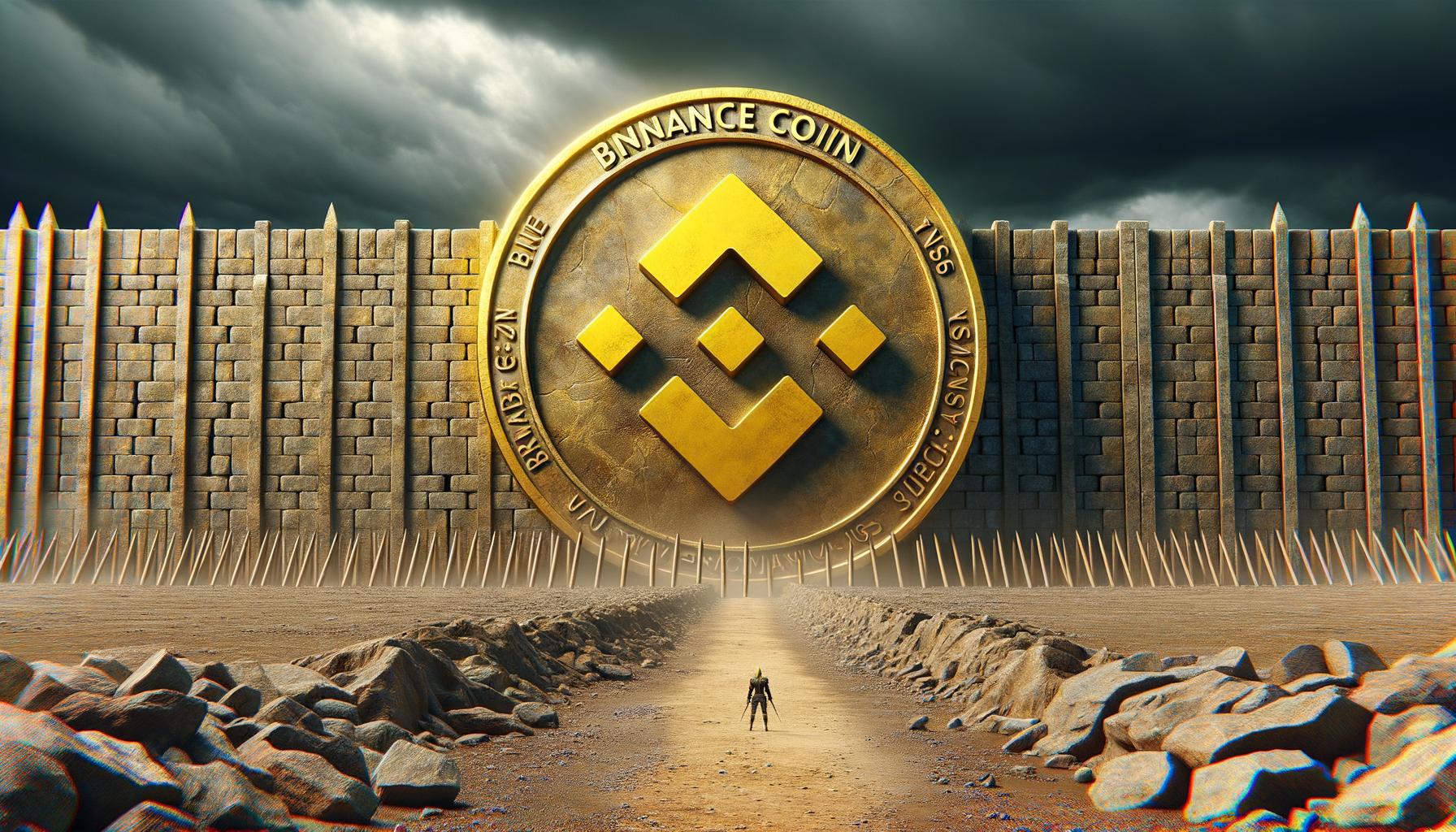
Aayush Jindal, a luminary in the world of financial markets, whose expertise spans over 15 illustrious years in the realms of Forex and cryptocurrency trading. Renowned for his unparalleled proficiency in providing technical analysis, Aayush is a trusted advisor and senior market expert to investors worldwide, guiding them through the intricate landscapes of modern finance with his keen insights and astute chart analysis.
From a young age, Aayush exhibited a natural aptitude for deciphering complex systems and unraveling patterns. Fueled by an insatiable curiosity for understanding market dynamics, he embarked on a journey that would lead him to become one of the foremost authorities in the fields of Forex and crypto trading. With a meticulous eye for detail and an unwavering commitment to excellence, Aayush honed his craft over the years, mastering the art of technical analysis and chart interpretation.
As a software engineer, Aayush harnesses the power of technology to optimize trading strategies and develop innovative solutions for navigating the volatile waters of financial markets. His background in software engineering has equipped him with a unique skill set, enabling him to leverage cutting-edge tools and algorithms to gain a competitive edge in an ever-evolving landscape.
In addition to his roles in finance and technology, Aayush serves as the director of a prestigious IT company, where he spearheads initiatives aimed at driving digital innovation and transformation. Under his visionary leadership, the company has flourished, cementing its position as a leader in the tech industry and paving the way for groundbreaking advancements in software development and IT solutions.
Despite his demanding professional commitments, Aayush is a firm believer in the importance of work-life balance. An avid traveler and adventurer, he finds solace in exploring new destinations, immersing himself in different cultures, and forging lasting memories along the way. Whether he’s trekking through the Himalayas, diving in the azure waters of the Maldives, or experiencing the vibrant energy of bustling metropolises, Aayush embraces every opportunity to broaden his horizons and create unforgettable experiences.
Aayush’s journey to success is marked by a relentless pursuit of excellence and a steadfast commitment to continuous learning and growth. His academic achievements are a testament to his dedication and passion for excellence, having completed his software engineering with honors and excelling in every department.
At his core, Aayush is driven by a profound passion for analyzing markets and uncovering profitable opportunities amidst volatility. Whether he’s poring over price charts, identifying key support and resistance levels, or providing insightful analysis to his clients and followers, Aayush’s unwavering dedication to his craft sets him apart as a true industry leader and a beacon of inspiration to aspiring traders around the globe.
In a world where uncertainty reigns supreme, Aayush Jindal stands as a guiding light, illuminating the path to financial success with his unparalleled expertise, unwavering integrity, and boundless enthusiasm for the markets.
Market
VanEck Sets Stage for BNB ETF with Official Trust Filing

Global investment management firm VanEck has officially registered a statutory trust in Delaware for Binance’s BNB (BNB) exchange-traded fund (ETF).
This move marks the first attempt to launch a spot BNB ETF in the United States. It could potentially open new avenues for institutional and retail investors to gain exposure to the asset through a regulated investment vehicle.
VanEck Moves Forward with BNB ETF
The trust was registered on March 31 under the name “VanEck BNB ETF” with filing number 10148820. It was recorded on Delaware’s official state website.

The proposed BNB ETF would track the price of BNB. It is the native cryptocurrency of the BNB Chain ecosystem, developed by the cryptocurrency exchange Binance.
As per the latest data, BNB ranks as the fifth-largest cryptocurrency by market capitalization at $87.1 billion. Despite its significant market position, both BNB’s price and the broader cryptocurrency market have faced some challenges recently.
Over the past month, the altcoin’s value has declined 2.2%. At the time of writing, BNB was trading at $598. This represented a 1.7% dip in the last 24 hours, according to data from BeInCrypto.

While the trust filing hasn’t yet led to a price uptick, the community remains optimistic about the prospects of BNB, especially with this new development.
“Send BNB to the moon now,” an analyst posted on X (formerly Twitter).
The filing comes just weeks after VanEck made a similar move for Avalanche (AVAX). On March 10, VanEck registered a trust for an AVAX-focused ETF.
This was quickly followed by the filing of an S-1 registration statement with the US Securities and Exchange Commission (SEC). Given this precedent, a similar S-1 filing for a BNB ETF could follow soon.
“A big step toward bringing BNB to US institutional investors!” another analyst wrote.
Meanwhile, the industry has seen an influx of crypto fund applications at the SEC following the election of a pro-crypto administration. In fact, a recent survey revealed that 71% of ETF investors are bullish on crypto and plan to increase their allocations to cryptocurrency ETFs in the next 12 months.
“Three-quarters of allocators expect to increase their investment in cryptocurrency-focused ETFs over the next 12 months, with demand highest in Asia (80%), and the US (76%), in contrast to Europe (59%),” the survey revealed.
This growing interest in crypto ETFs could drive further demand for assets like BNB, making the VanEck BNB ETF a potentially significant product in the market.
Disclaimer
In adherence to the Trust Project guidelines, BeInCrypto is committed to unbiased, transparent reporting. This news article aims to provide accurate, timely information. However, readers are advised to verify facts independently and consult with a professional before making any decisions based on this content. Please note that our Terms and Conditions, Privacy Policy, and Disclaimers have been updated.
Market
XRP Recovery Stalls—Are Bears Still In Control?

XRP price started a fresh decline from the $2.20 zone. The price is now consolidating and might face hurdles near the $2.120 level.
- XRP price started a fresh decline after it failed to clear the $2.20 resistance zone.
- The price is now trading below $2.150 and the 100-hourly Simple Moving Average.
- There is a connecting bearish trend line forming with resistance at $2.120 on the hourly chart of the XRP/USD pair (data source from Kraken).
- The pair might extend losses if it fails to clear the $2.20 resistance zone.
XRP Price Faces Rejection
XRP price failed to continue higher above the $2.20 resistance zone and reacted to the downside, like Bitcoin and Ethereum. The price declined below the $2.150 and $2.120 levels.
The bears were able to push the price below the 50% Fib retracement level of the recovery wave from the $2.023 swing low to the $2.199 high. There is also a connecting bearish trend line forming with resistance at $2.120 on the hourly chart of the XRP/USD pair.
The price is now trading below $2.150 and the 100-hourly Simple Moving Average. However, the bulls are now active near the $2.10 support level. They are protecting the 61.8% Fib retracement level of the recovery wave from the $2.023 swing low to the $2.199 high.
On the upside, the price might face resistance near the $2.120 level and the trend line zone. The first major resistance is near the $2.150 level. The next resistance is $2.20. A clear move above the $2.20 resistance might send the price toward the $2.240 resistance. Any more gains might send the price toward the $2.2650 resistance or even $2.2880 in the near term. The next major hurdle for the bulls might be $2.320.
Another Decline?
If XRP fails to clear the $2.150 resistance zone, it could start another decline. Initial support on the downside is near the $2.10 level. The next major support is near the $2.0650 level.
If there is a downside break and a close below the $2.0650 level, the price might continue to decline toward the $2.020 support. The next major support sits near the $2.00 zone.
Technical Indicators
Hourly MACD – The MACD for XRP/USD is now gaining pace in the bearish zone.
Hourly RSI (Relative Strength Index) – The RSI for XRP/USD is now below the 50 level.
Major Support Levels – $2.10 and $2.050.
Major Resistance Levels – $2.120 and $2.20.
-
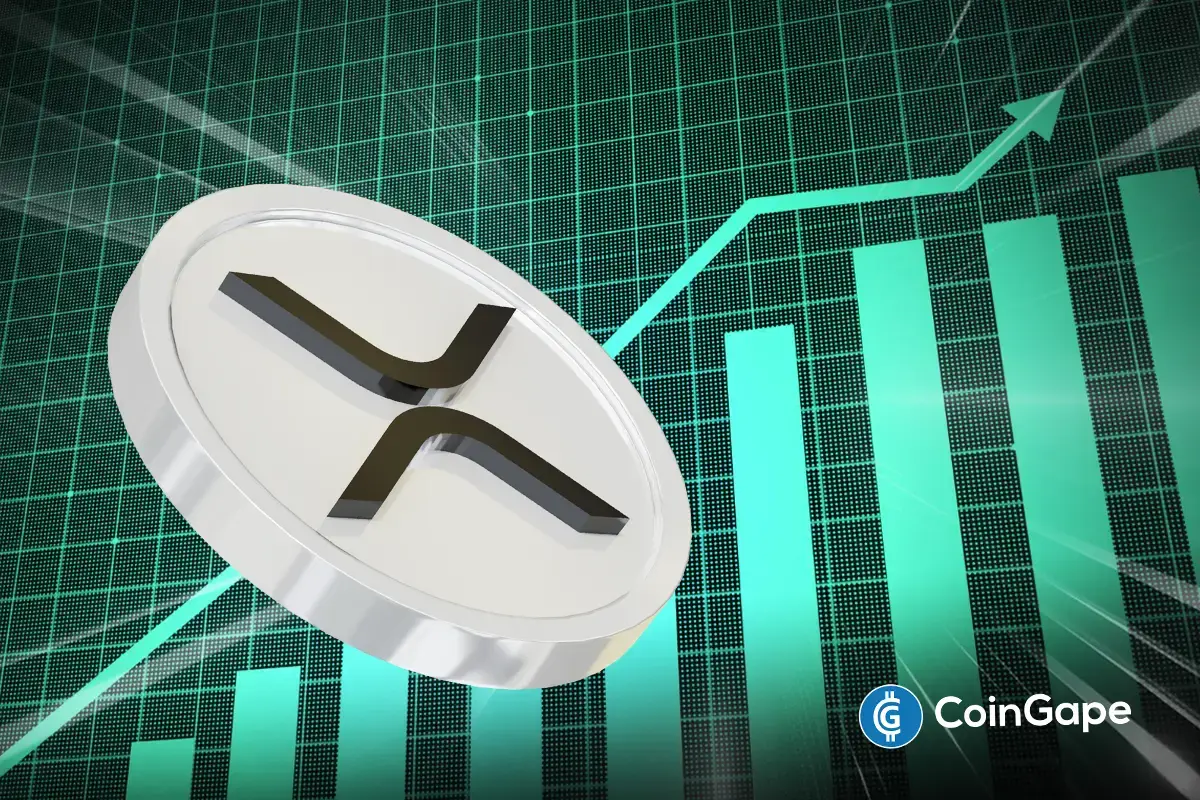
 Altcoin23 hours ago
Altcoin23 hours agoXRP Price to $27? Expert Predicts Exact Timeline for the Next Massive Surge
-

 Market23 hours ago
Market23 hours agoBinance Megadrop Launches KernelDAO
-

 Market22 hours ago
Market22 hours agoEthereum Struggles to Break Out as Bear Trend Fades
-

 Market21 hours ago
Market21 hours agoHow Did UPCX Lose $70 Million in a UPC Hack?
-

 Market17 hours ago
Market17 hours agoSUI Price Stalls After Major $147 Million Token Unlock
-

 Market16 hours ago
Market16 hours agoBeInCrypto US Morning Briefing: Standard Chartered and Bitcoin
-

 Market24 hours ago
Market24 hours agoWintermute Sells ACT Tokens Due To Binance Limit Changes
-

 Market15 hours ago
Market15 hours agoAnalyst Reveals ‘Worst Case Scenario’ With Head And Shoulders Formation




